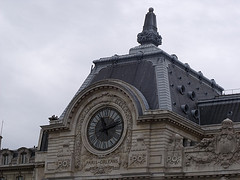French doors make an excellent addition to any home, enhancing both natural light and aesthetics. Often mentioned by real estate agents in terms of curb appeal, French doors contribute significantly to a property’s attractiveness. They can open up a room to make the home appear more spacious or lead to a terrace, seamlessly connecting indoor and outdoor spaces. In today’s post, we’ll explore the history of French doors, the materials used in their construction, and how contemporary designers have found new applications for this classic, functional work of art.
The French door’s origin can be traced back to its early form as a window, specifically the casement window that evolved during the French Renaissance period. Initially, these windows extended down to the floor and were commonly found on the second floors of homes. Eventually, someone decided to expand the window upwards and transform it into a door. The original French doors featured individual glass panes, known as lites, separated by wooden dividers called mullions. The number of glass panes was used to describe the door; for example, a door with 10 glass panes would be referred to as a 10-lite French door.
The original French doors were made using single glass panes and wood. Modern advancements have enabled the use of lightweight materials such as aluminum or uPVC in their construction. Today, instead of multiple glass panes divided by mullions, manufacturers often use a single piece of double-pane glass in the door and apply a grid overlay to achieve the segmented appearance. Craftsmanship and innovation have led to a variety of French door designs, including models with mini-blinds encased between the two glass panes for light control and privacy.
This is just one example of the many creative possibilities manufacturers are developing today.
As consumers’ needs and preferences evolve, designers are continuously devising unique and inventive ways to meet these demands. For instance, restaurant owners often look for ways to expand their establishments’ square footage to accommodate more seating. Designers have ingeniously addressed this by replacing an entire wall with a series of bi-folding French doors. It seems that the potential applications for French doors are limited only by our imagination.
Manuel Marino is a seasoned Senior Producer, Music Composer, and Artist with over a decade of experience. He specializes in branded entertainment across various mediums, including video games, films, and advertising campaigns. With 20+ years as a game music composer, Manuel has worked on numerous platforms, creating diverse orchestral soundtracks. HIRE ME


 Manuel is a passionate, driven, and techsavvy AV technician,
Manuel is a passionate, driven, and techsavvy AV technician, 
